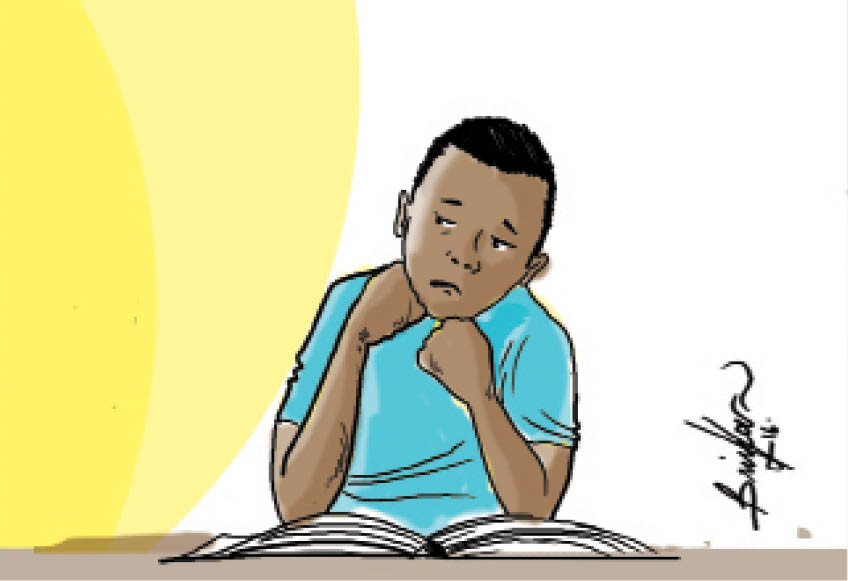Hafsat noticed something was wrong with her son when he was a few months old. His muscles were stiff, and he could neither talk nor walk when he was almost two years old. After a series of hospital visits, he was diagnosed with Cerebral Palsy.
Cerebral Palsy has been around since time immemorial and was coined more than a century ago by Sir William Osler and loosely translates as ‘brain paralysis’. It equally translates paralysis as “complete weakness” and paresis as “partial weakness”.
The brain is the control engine of the body and because of the fact that it hardly recovers when injured, unlike other parts of the body, makes an insult (a sudden neurological deficit caused by disturbance of brain blood flow) to the brain almost unlikely to regain its function depending on the area affected, more so during its most vulnerable developmental and maturation period.
According to a psychiatrist, Abdurrahman Ashiru, cerebral palsy is a nonspecific neurodevelopmental condition which is used to describe a chronic, static and non-progressive impairment of muscle tone, posture, coordination of movements as a result of an insult or injury to the developing brain.
He said the condition was non-progressive unlike other neurodegenerative diseases and originated from some type of cerebral insult or injury to the developing immature brain, usually before birth, but also during delivery and up until the age of two or three years of the child`s life.
Dr Ashiru said the disease was the third most common major developmental disability after autism and intellectual disability. “It is prevalent in developed countries between 1.5-2 cases per 1000 live birth of full-term newborns. In premature newborns birth weight measures1500 grams. It is 90 per 1000 live births.
“As a generalization, the lower the birth weight and the gestational age, the higher the risk of Cerebral Palsy,” he said.
He said other neurologic deficits or disorders from the condition are blindness, deafness, learning disability, intellectual disability or epilepsy that often coexist. The fundamental course, severity, clinical presentation, and prognosis vary widely.
Doctor Abdurrahman said the most common forms of cerebral palsy of 75% of cases involve spasticity, that is, increased resistance to passive movements of the limbs. “Variety of terms used to denote the specific limb or combination of limbs affected are monoplegia, that is one limb; hemiplegia arm and leg on the same side of the body, but the arm is more affected than leg; paraplegia both legs affected with arms unaffected and quadriplegia, all four limbs affected equally.”
He said, “Ataxic type is the second most common form of cerebral palsy, accounting for about 15% of cases. It frequently affects fine coordinated movements of the upper extremities, but may also involve lower extremities and trunk.
“The Dyskinetic type is characterised by an involuntary movement of a muscle group of varying severity and presentation.”
Doctor Abdurrahman said: “Cerebral Palsy may result from an underlying structural abnormality of the brain before birth, at birth or after delivery and this may be due to pre-term birth blood vessels abnormality, toxins or infections.
“Risk factors for cerebral palsy are multifactorial and can include preterm birth, multiple pregnancies, intrauterine growth restriction, male sex, low Apgar scores, intrauterine infections, maternal thyroid gland abnormalities, prenatal strokes, birth asphyxia, methyl mercury exposure and iodine deficiency in the mother.”
The psychiatrist said myths abound about Cerebral Palsy and vary from one culture to another. “For instance, the sweeping generalizing statement that all children with Cerebral Palsy are intellectually disabled, have learning disabilities, cannot live an independent life or go to school or bear children, they are only being punished for their sins or those of their parents.
“While some of these things are true, therefore, we should exercise caution as they are not applicable to every person with Cerebral Palsy. It is also very important to identify another big myth which keeps circulating that there is a cure to Cerebral Palsy; while treatment is available, a cure is not something that exists.”
According to Dr Abdurrahaman, a substantial number of Cerebral Palsy cases could be prevented particularly in low and middle-income countries if pregnant women attend antenatal care and ensure hospital delivery which promises to mitigate prolonged labour and its attendant consequences such as birth asphyxia, traumatic injury to the newborn, and providing the nutritional requirement for pregnant women and the newborn.
He also said it is very important to aggressively prevent and treat neonatal infections such as meningitis, pneumonia, seizures and jaundice among others.
He added that people should know that while taking preventive measures is absolutely important, it is not also absolutely preventive and in some cases, as it could still occur even in places with the best sophistry such as Europe and America.
“Treatment is directed generally at assisting the child to attain maximal physical functioning and to realize his or her potentials through physical, occupational and speech therapy, orthopaedic monitoring and intervention and special educational assistance which could all contribute to an improved outcome.
“Drug treatment for spasticity and seizures is needed by many children. A new treatment called Constraint-induced CI movement therapy is being studied in controlled trials. Also, the general support of the parents and family with counselling, educational programmes and support groups is needed.
The outcome for patients with cerebral palsy depends greatly on the child’s intelligence quotient, IQ, the severity of the motor deficits, and degree of incapacity, while recurrent infections and other co-occurring diseases are the most common causes of death,” he said.
He advised the public to remain vigilant toward children living with the condition against abuse from unsuspecting adults as well as bullying.
“Parents should join support groups as much as possible because of the immense benefits. Seeking medical care early is associated with better outcomes.
“Finally, the government, individuals and various stakeholders should make treatment affordable, available and accessible to them and to support the parents in any means possible,” he said.

 Join Daily Trust WhatsApp Community For Quick Access To News and Happenings Around You.
Join Daily Trust WhatsApp Community For Quick Access To News and Happenings Around You.


